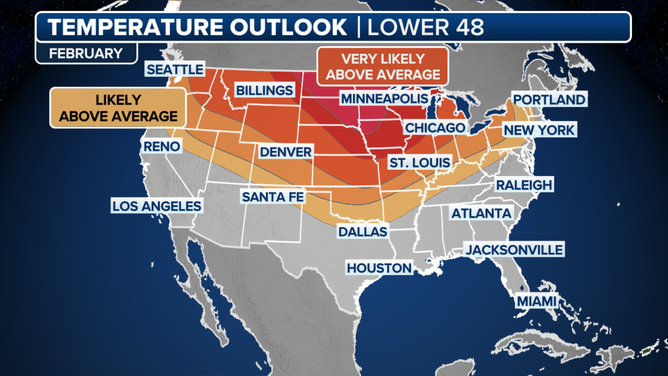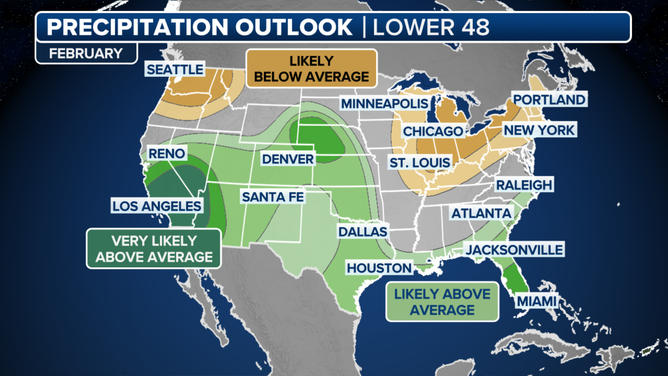Blowtorch weather to continue during final full month of winter, NOAA says
Forecasters say El Niño is playing a major role in the weather patterns across North America.
NOAA expects warmer conditions to remain in February
According to NOAA’s latest climate outlook, February will feature above-average temperatures across much of the Lower 48, with temperatures that will exhibit average tendencies in the Southwest and Southeast.
If the latest monthly outlook is anywhere close to being accurate, the U.S. is in store to finish the winter as one of the warmest on record, breaking records previously set nearly a decade ago.
According to NOAA’s latest climate outlook, February will feature above-average temperatures across much of the Lower 48, with temperatures that will be near average in the Southwest and Southeast.
The forecast is fairly similar to the full winter season outlook, which called for warm temperatures in the northern tier of the country and near-normal conditions over the southern region.
Forecasters said the continued dominance of El Niño over weather patterns across North America is playing a crucial role.
The pattern is similar to the 2014–2016 El Niño, which produced the warmest winter season on record.

February temperature outlook
(FOX Weather)
EL NINO APPEARS TO BE ON VERGE OF RAPID COLLAPSE
Forecasters will be closely watching for any anomalies that pop up, but using data from models such as the Global Ensemble Forecast System and the European Centre for Medium-Range Weather Forecasts, no arctic air outbreaks are expected at least through mid-month.
NOAA also expects over half of the country to experience wetter than normal conditions in February, which could lead to complicated forecasts.
If temperatures are warmer than average, the bulk of precipitation will fall as rain, as temperatures won’t be conducive for frozen precipitation.
If the temperature outlook is inaccurate, and the mercury ends up being lower than normal, some of the precipitation could fall in the frozen variety. No widespread blizzards are anticipated through at least mid-month.
Most of the Plains, Southwest and Southeast are expected to see more precipitation than is typical during the year’s second month – a sign that the southern jet and El Niño will continue to be active.

February precipitation outlook
(FOX Weather)
February is typically the second-coldest month of the year for the country as a whole, just behind January.
Every Feb. 2, crowds gather at Gobbler’s Knob in Punxsutawney, Pennsylvania, to await a forecast from a 20-pound groundhog.
Punxsutawney Phil’s past prediction accuracies of extended winters have been mixed. If the rodent sees his shadow, folklore has it that the country can expect six more weeks of winter.
Meteorological winter runs from December through February, but snow and cold weather can linger into March and even later across large parts of the country.

Punxsutawney Phil saw his shadow during a Groundhog Day celebration at the Gobbler's Knob in Punxsutawney, Pennsylvania, on February 2, 2023.
(Fatih Aktas/Anadolu Agency / Getty Images)
